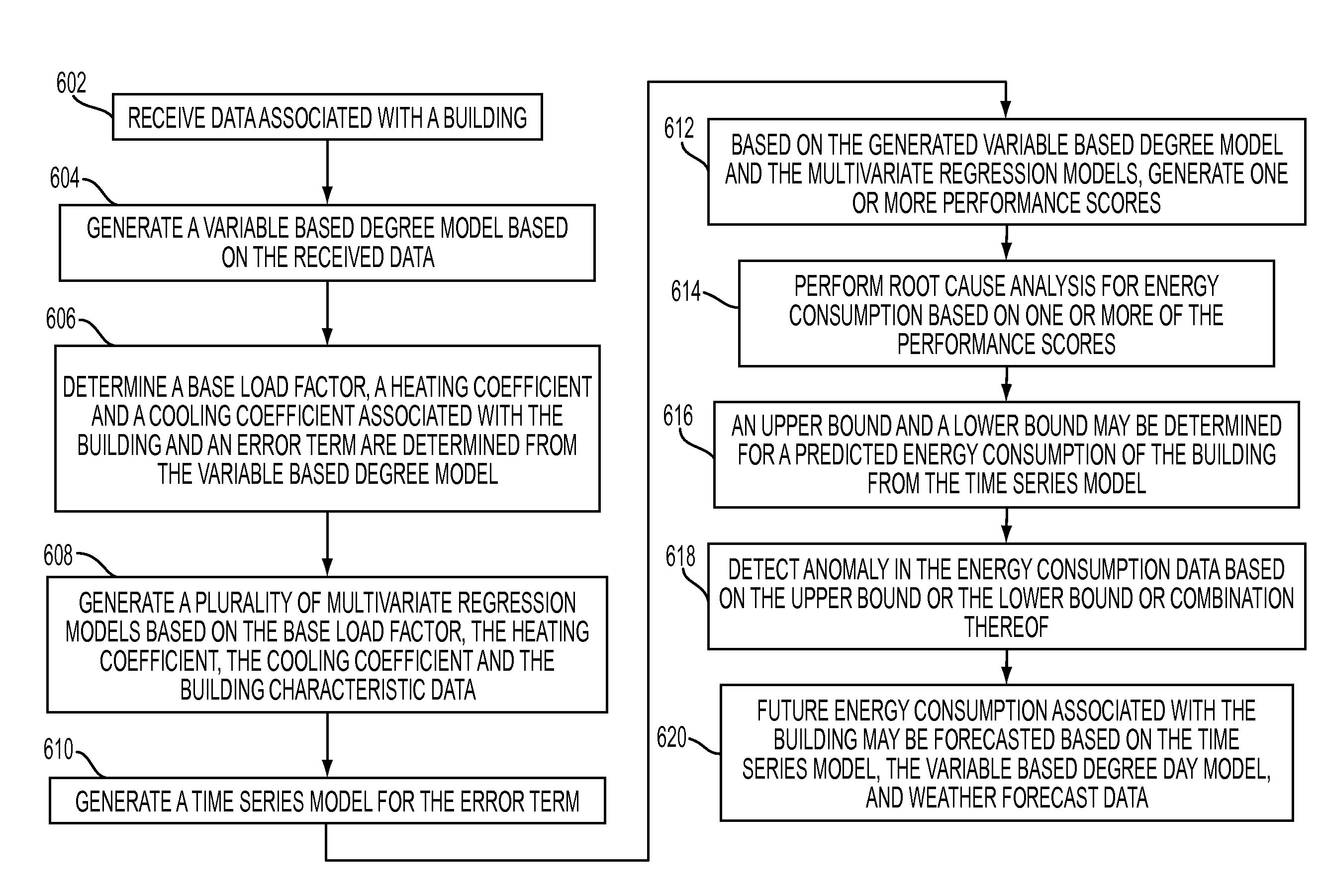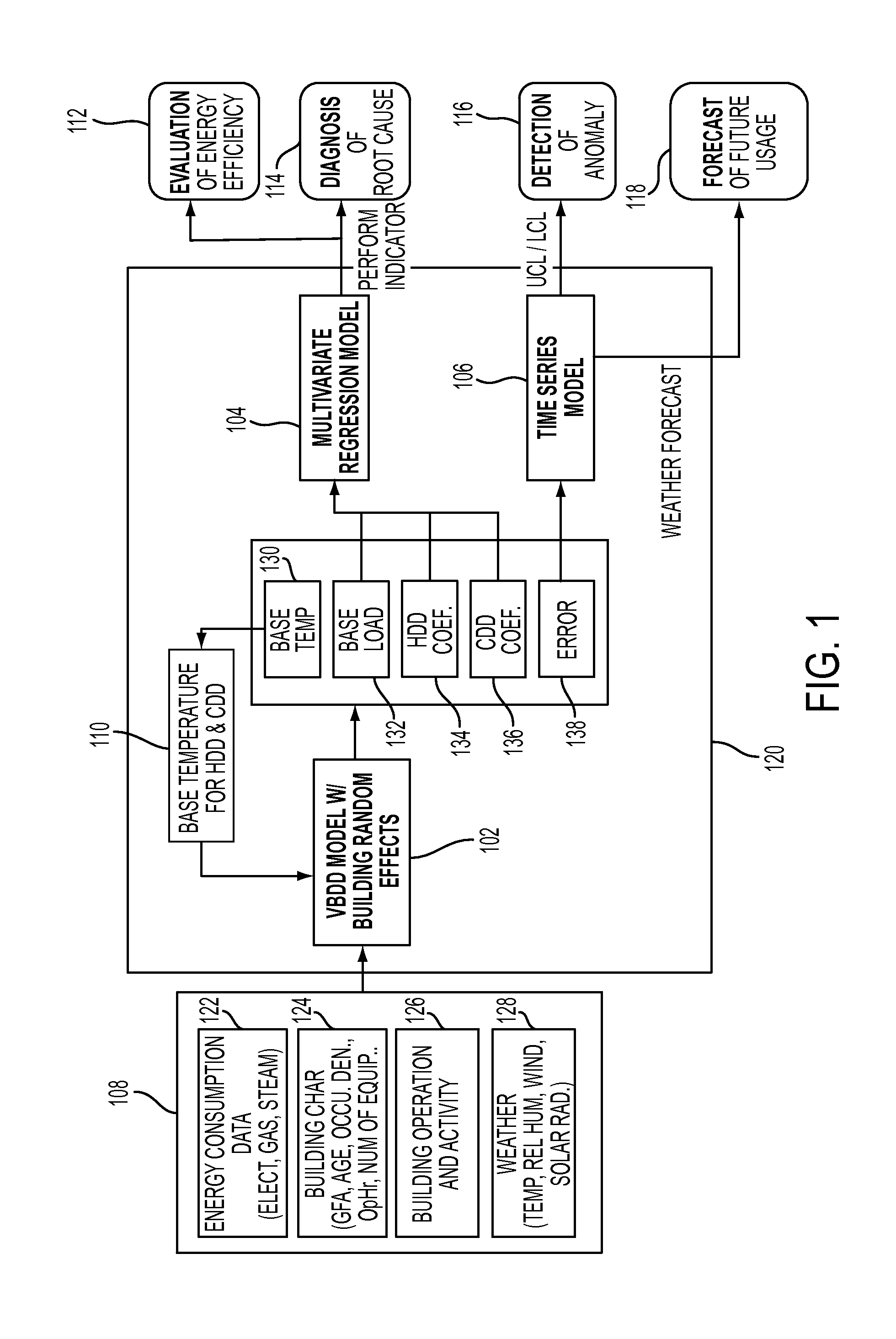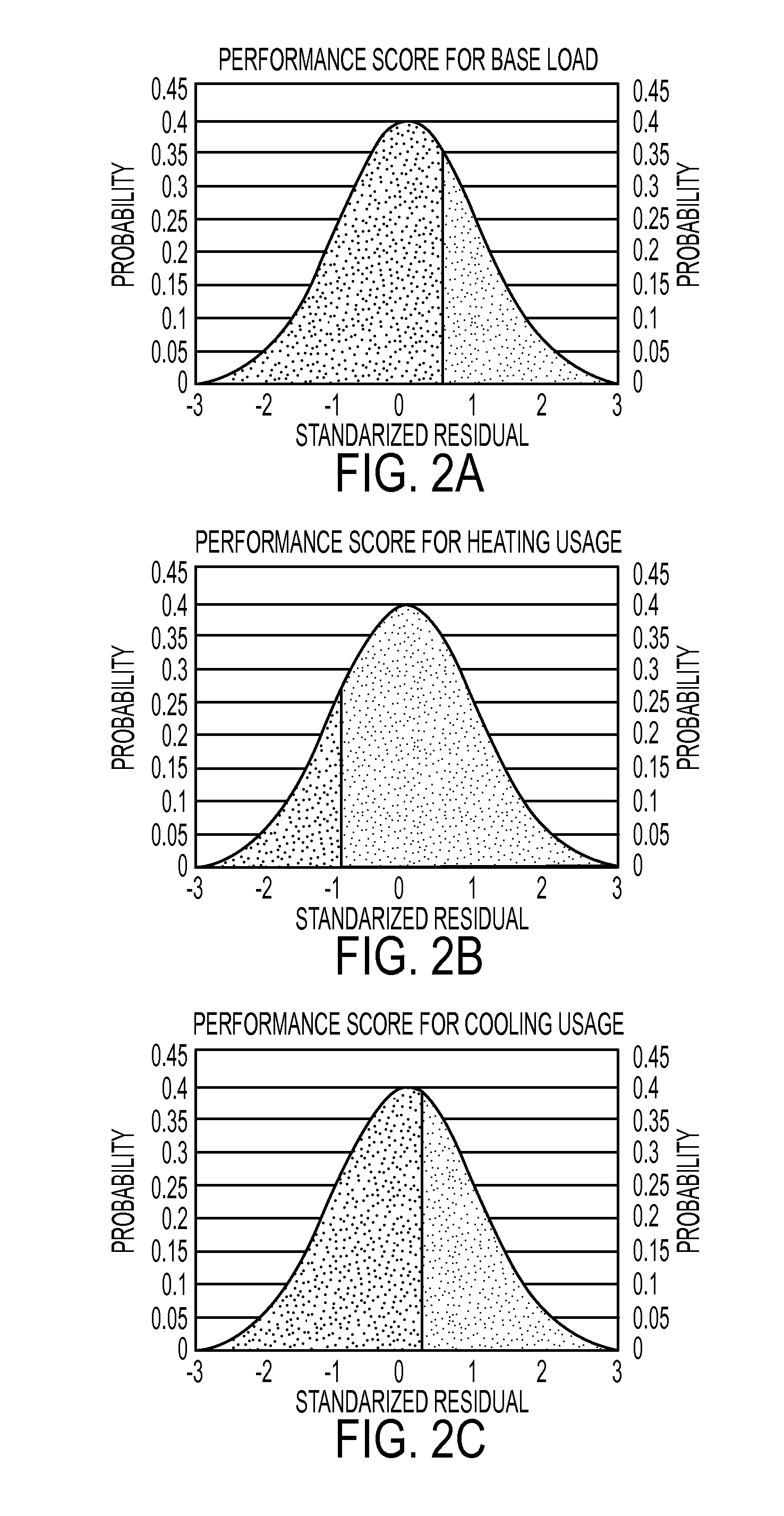Anomaly detection, forecasting and root cause analysis of energy consumption for a portfolio of buildings using multi-step statistical modeling
a technology of energy consumption and multi-step statistical modeling, applied in the field of anomaly detection, forecasting and root cause analysis of energy consumption for a portfolio of buildings, can solve problems such as difficult or simple task of analyzing energy consumption in buildings
- Summary
- Abstract
- Description
- Claims
- Application Information
AI Technical Summary
Benefits of technology
Problems solved by technology
Method used
Image
Examples
Embodiment Construction
[0014]Energy consumption analysis in buildings employing multi-step statistical modeling is presented. The analysis in one embodiment may provide anomaly detection, forecasting, and root cause of energy consumption for a portfolio of buildings. To manage and to be able to reduce overall energy consumed in a building or a portfolio of buildings, a methodology in one embodiment of the present disclosure studies the energy consumption in finer grain: for example, how much energy is consumed for different types of usage such as for heating, cooling, and other non-temperature dependent usage (referred to herein as base loads) such as for lighting, hot water, refrigerator, and others. The methodology in one embodiment also evaluates building energy performance for different types of usage such as for heating, cooling, based loads, and overall energy use. In one aspect, different factors such as building characteristics and operations that contribute to energy consumption are taken into ac...
PUM
 Login to View More
Login to View More Abstract
Description
Claims
Application Information
 Login to View More
Login to View More - R&D
- Intellectual Property
- Life Sciences
- Materials
- Tech Scout
- Unparalleled Data Quality
- Higher Quality Content
- 60% Fewer Hallucinations
Browse by: Latest US Patents, China's latest patents, Technical Efficacy Thesaurus, Application Domain, Technology Topic, Popular Technical Reports.
© 2025 PatSnap. All rights reserved.Legal|Privacy policy|Modern Slavery Act Transparency Statement|Sitemap|About US| Contact US: help@patsnap.com



